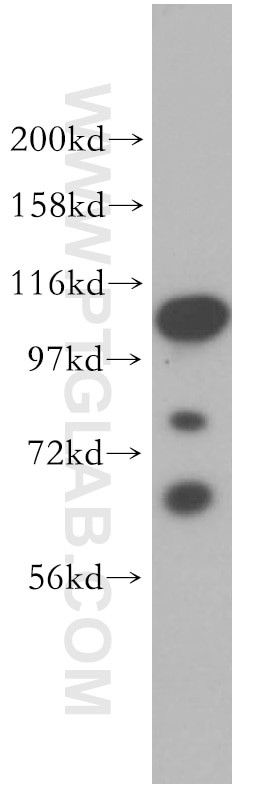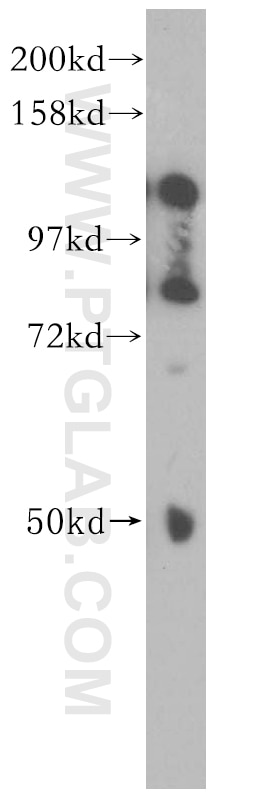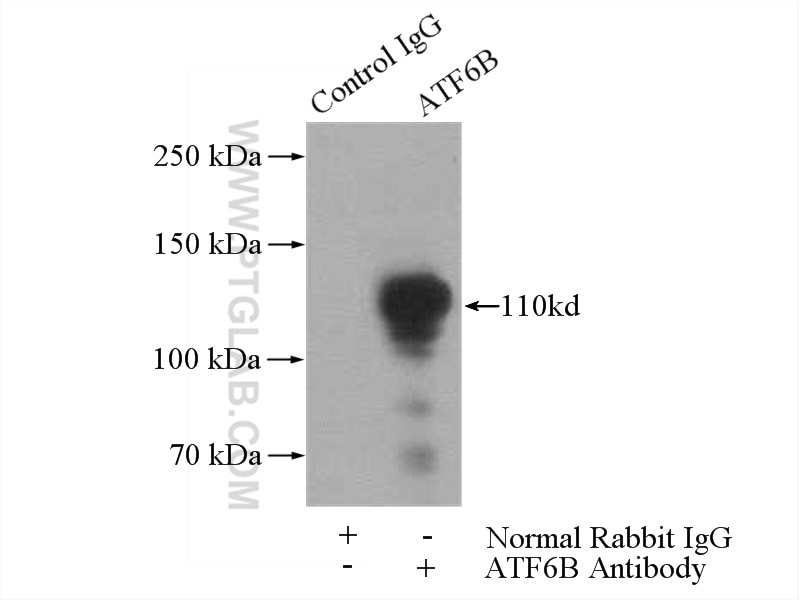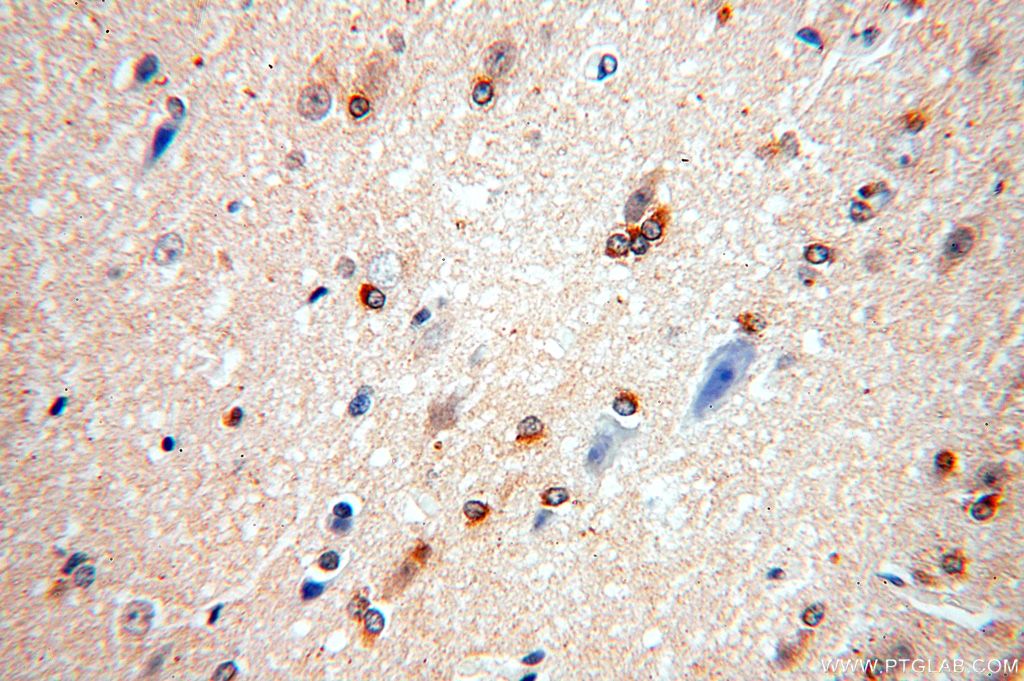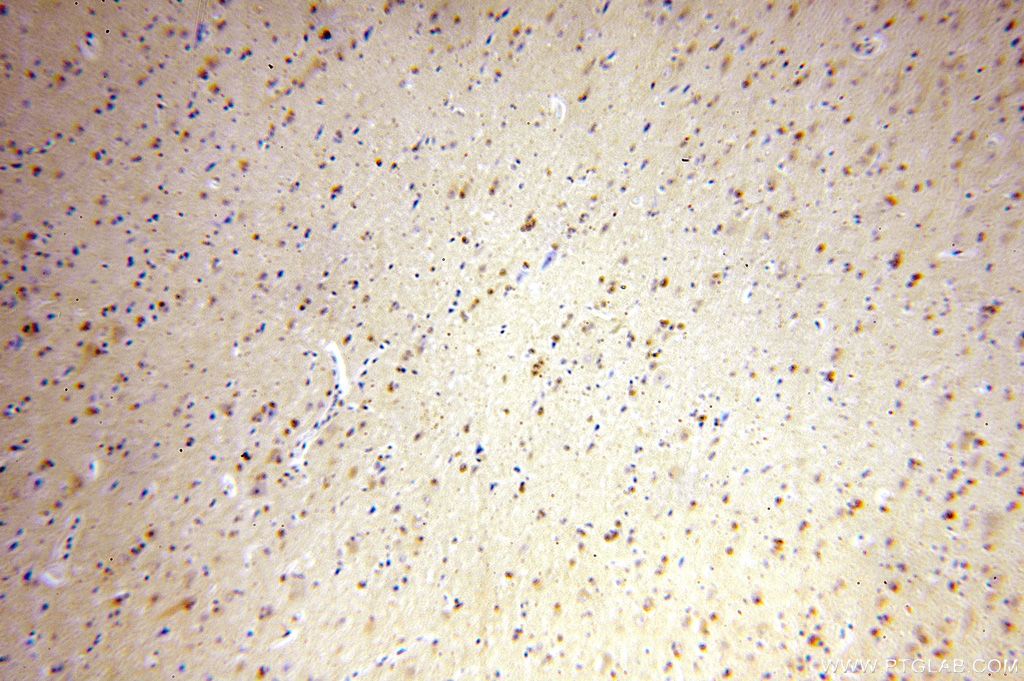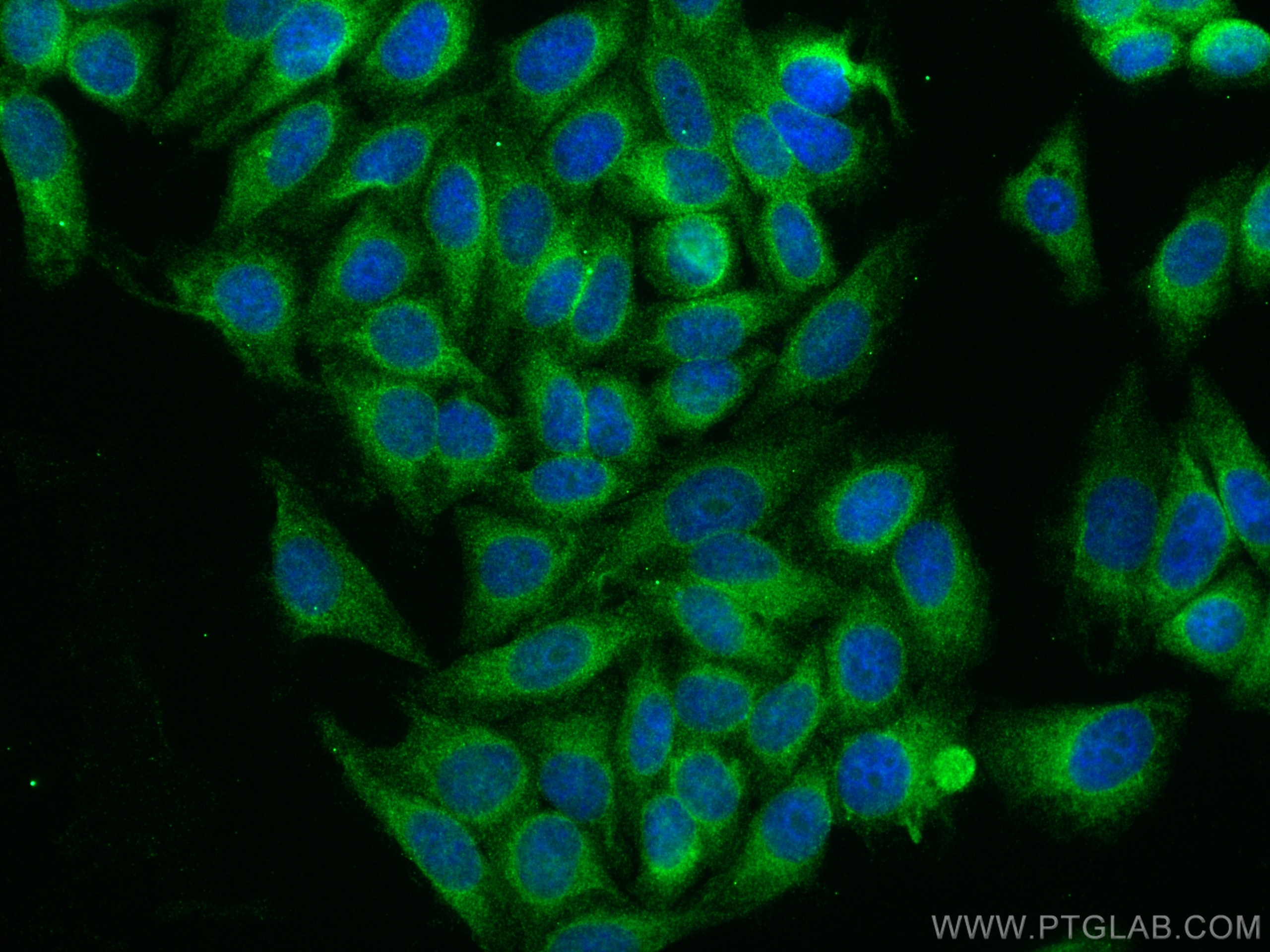- Phare
- Validé par KD/KO
Anticorps Polyclonal de lapin anti-ATF6B
ATF6B Polyclonal Antibody for WB, IHC, IF/ICC, IP, ELISA
Hôte / Isotype
Lapin / IgG
Réactivité testée
Humain, rat, souris
Applications
WB, IHC, IF/ICC, IP, ELISA
Conjugaison
Non conjugué
N° de cat : 15794-1-AP
Synonymes
Galerie de données de validation
Applications testées
| Résultats positifs en WB | cellules Jurkat, tissu testiculaire humain |
| Résultats positifs en IP | cellules Jurkat |
| Résultats positifs en IHC | tissu cérébral humain il est suggéré de démasquer l'antigène avec un tampon de TE buffer pH 9.0; (*) À défaut, 'le démasquage de l'antigène peut être 'effectué avec un tampon citrate pH 6,0. |
| Résultats positifs en IF/ICC | cellules HepG2, |
Dilution recommandée
| Application | Dilution |
|---|---|
| Western Blot (WB) | WB : 1:1000-1:4000 |
| Immunoprécipitation (IP) | IP : 0.5-4.0 ug for 1.0-3.0 mg of total protein lysate |
| Immunohistochimie (IHC) | IHC : 1:20-1:200 |
| Immunofluorescence (IF)/ICC | IF/ICC : 1:50-1:500 |
| It is recommended that this reagent should be titrated in each testing system to obtain optimal results. | |
| Sample-dependent, check data in validation data gallery | |
Applications publiées
| KD/KO | See 1 publications below |
| WB | See 15 publications below |
| IHC | See 1 publications below |
| IF | See 3 publications below |
Informations sur le produit
15794-1-AP cible ATF6B dans les applications de WB, IHC, IF/ICC, IP, ELISA et montre une réactivité avec des échantillons Humain, rat, souris
| Réactivité | Humain, rat, souris |
| Réactivité citée | rat, Humain, souris |
| Hôte / Isotype | Lapin / IgG |
| Clonalité | Polyclonal |
| Type | Anticorps |
| Immunogène | ATF6B Protéine recombinante Ag8502 |
| Nom complet | activating transcription factor 6 beta |
| Masse moléculaire calculée | 703 aa, 77 kDa |
| Poids moléculaire observé | 110 kDa |
| Numéro d’acquisition GenBank | BC008394 |
| Symbole du gène | ATF6B |
| Identification du gène (NCBI) | 1388 |
| Conjugaison | Non conjugué |
| Forme | Liquide |
| Méthode de purification | Purification par affinité contre l'antigène |
| Tampon de stockage | PBS with 0.02% sodium azide and 50% glycerol |
| Conditions de stockage | Stocker à -20°C. Stable pendant un an après l'expédition. L'aliquotage n'est pas nécessaire pour le stockage à -20oC Les 20ul contiennent 0,1% de BSA. |
Informations générales
The endoplasmic reticulum (ER)-transmembrane proteins, ATF6 alpha (ATF6) and ATF6 beta (ATF6B), are cleaved during the ER stress response (ERSR). The resulting N-terminal fragments of both ATF6 isoforms, which have conserved basic leucine-zipper and DNA binding domains but divergent transcriptional activation domains, translocate to the nucleus where they bind to ER stress-response elements (ERSE) in ERSR, such as Bip/GRP78. This antibody could recognize ATF6 beta (110kd) and its cleaved forms(60,80kd )(PMID: 11256944)
Protocole
| Product Specific Protocols | |
|---|---|
| WB protocol for ATF6B antibody 15794-1-AP | Download protocol |
| IHC protocol for ATF6B antibody 15794-1-AP | Download protocol |
| IF protocol for ATF6B antibody 15794-1-AP | Download protocol |
| IP protocol for ATF6B antibody 15794-1-AP | Download protocol |
| Standard Protocols | |
|---|---|
| Click here to view our Standard Protocols |
Publications
| Species | Application | Title |
|---|---|---|
Cancer Lett LIMK1 m6A-RNA methylation recognized by YTHDC2 induces 5-FU chemoresistance in colorectal cancer via endoplasmic reticulum stress and stress granule formation | ||
Int J Mol Sci Proteomic Analysis of Marinesco-Sjogren Syndrome Fibroblasts Indicates Pro-Survival Metabolic Adaptation to SIL1 Loss. | ||
Front Cell Dev Biol miR-1260b inhibits periodontal bone loss by targeting ATF6β mediated regulation of ER stress
| ||
Front Cell Dev Biol Mfn2 Regulates High Glucose-Induced MAMs Dysfunction and Apoptosis in Podocytes via PERK Pathway | ||
Arch Toxicol Correction to: Protective effects of dioscin against alcohol‑induced liver injury. |
